In the 16th century Medicean Villa of Castello, is one of the most important of Florence’s many libraries, the Crusca Academy (Accademia della Crusca). The Villa of Castello, located on the northern edge of the city, with its magnificent gardens (open to the public), passed from the Medici dukes to the Lorraine dukes to the King of Italy, who gave it to the State in 1919. The villa was chosen as the permanent home of the Crusca Academy in 1966.
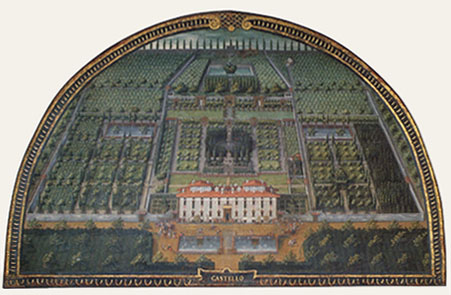
The location is fitting because the origins of the Accademia della Crusca can be traced back to the mid-16th century when a group of educated philosophers, writers and linguists, disliking the rigidity of the revered Accademia Fiorentina decided to form a new academy. Calling themselves the “brigata dei crusconi” (brigade of coarse bran), they organized cruscate – amusing meetings with trivial speeches and conversation – but which also included debates and readings of cultural value, focused on works written, not in Latin, but in Italian, especially in the Florentine vernacular.
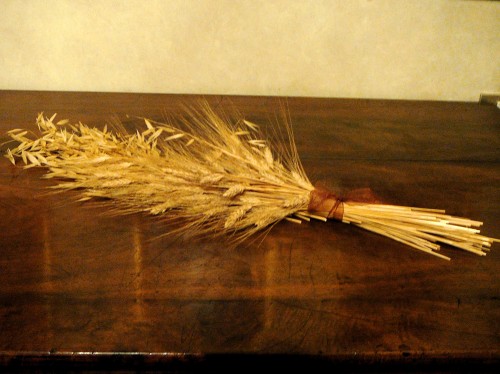
Soon, the academy adopted the name Crusca (bran), establishing the use of the symbols related to flour and to the process of separating the flour (the good language) from the bran (the bad language), following a language model that was based on the supremacy of the Florentine “vulgar” or everyday tongue. The goal of the lexicographers was to propose language cleaned of the impurities of its usage.
They went further with the theme by deciding that all the objects and furniture of the Accademia should have names relating to grain, bran, and bread, including the personal coats of arms of the Academicians, the “pale” or wooden shovels, which were painted with a symbolic image, together with the nickname of each Academician and his chosen motto.
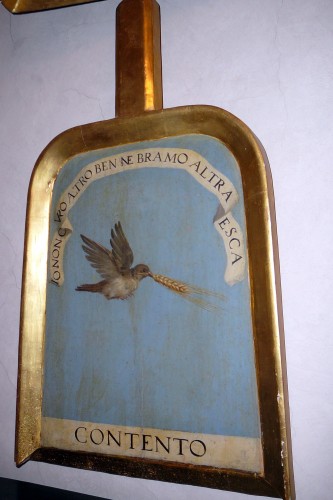
In 1590, the “frullone” or sifter, the vessel used to separate the flour from the bran, was chosen as the symbol of the Academy, as well as the motto -“il più bel fior ne coglie” (“she gathers the fairest flower”) – taken from a verse by Petrarch.
The traditional furnishings of the Accademia della Crusca included:
1) the gerle (panniers) – ceremonial academic chairs made of an upside down breadbasket with a bread shovel skewered through it to form the backrest (the addition of the shovel is attributed to Leopoldo de’ Medici);
2) the sacchi (sacks) – lockers shaped as sacks, which each had a door and shelves inside to preserve the “farina” or flour – the statutes, regulations and other writings approved by the academic censors; and
3) the pale (shovels) – decorative painted wood paddles, each bear the academic name of its owner, the motto (a line of verse originating from the 14th century many composed by Petrarch, chosen to encapsulate the spirit of the enterprise chosen by the Academician), and an image. The iconography of the shovels has been an object of study precisely because of the metaphoric meaning of the subjects, always linked to the agricultural, domestic or culinary subjects.
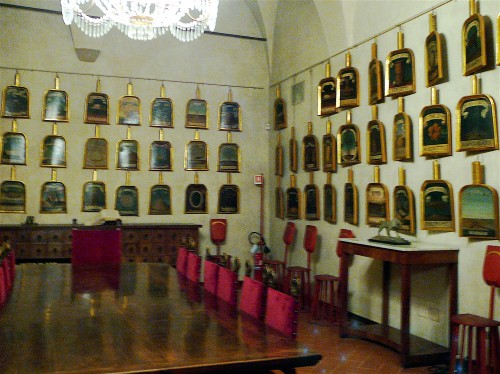
In the 20th century, the Accademia dedicated its energies to research activities, editorial duties and to giving advice about the Italian language, opening new paths in the fields of grammar, lexicography and philology.
Today, the Accademia della Crusca is the most important center of scientific research dedicated to the study and promotion of Italian language. Its main goal is to share historical knowledge of the Italian language and its ongoing evolution in the contemporary world, in Italian society (especially in the schools), and abroad.
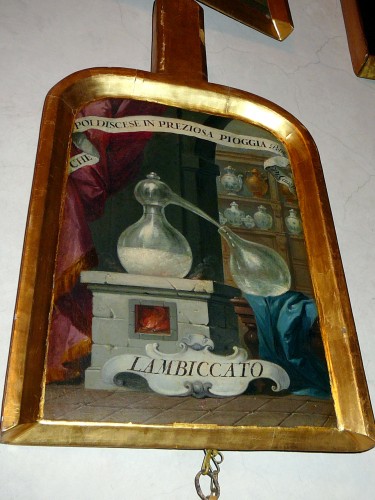
The Academy pursues its own editorial activity, and allows public access to a specialist library and the archives; it also maintains international contacts with similar institutions, organizes meetings, seminars and conventions on the Italian language; and it has an active role in the field of European linguistic policy. The Crusca Academy offers a linguistic advice service to the public and preserves a rich collection of artistic portraits, painting, frescos, and objects, such as the famous pale.
The Accademia della Crusca is located in Florence, at the Villa of Castello, Via di Castello, 46. Its website contains all relevant information in English as well as in Italian.
